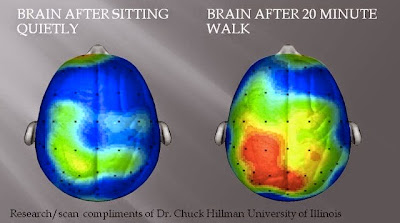Examples of how our brains can be simultaneously disengaged and engaged.
The Invisible Gorilla. Even if you've already seen this example before, watch it again.
The Stroop Test. Say the color of the word but not the text.
What this makes me wonder...
How important is it for learners to be aware of this brain science? If they come into a workshop or some other type of learning moment and they are self-aware of their engagement levels, would that help them monitor their personal learning experiences or would it just increase distraction and disengagement?
If it would be beneficial for learners to be aware of this, how do we make that happen effectively?
How trainers/facilitators can do to manage learners' engagement?
PROCESS acronym:
P is for patterning. Our brains create patterns to enhance efficiency. See the Stroop Test above. It's hard to resist/break cognitive patterns once they're formed. Trainers need to work to be aware of the patterns we all have. I like to think mental models fall into this category and I'm doing a workshop on that very topic for the Ruth Enlow library of Garrett County on Nov. 11.
R is for rest. Our memories are consolidated during the first 4 hours of sleep. When we are sleep deprived our brains function as though we are drunk. Point being, it is advisable to spread learning moments over time. Instead of having a 4 hour workshop, have two 2-hour workshops within 2-3 days of each other. This is what I'm hoping to attempt in January with our customer conversations workshop where we have a 3-hour session followed by a learning portfolio homework assignment which keeps the learning going at the learners' convenience over the span of two months. Staggering the learning is key. Someone said that effective learning is much like tending toy our lawn. You don't want to flood the lawn on Sunday and just let it soak. You want to water it a little bit each day depending on the weather, etc.
O is for own through translation. This just means that for learning to stick, learners need to be able to synthesize and summarize the point. What's even better is when they can teach someone else what they just learned. If this isn't possible, then ask the learners to create a metaphor for what they learned. I love this idea!
C is for context. This is the' "why are we doing this?" This makes me think of Simon Sinek's golden circle and starting with Why. If we aren't clear in our intentions, such as why we are offering a workshop on a particular topic, then hesitancy will increase among would-be participants. Build trust and build buy-in by communicating the context and motivation clearly.
E is for emotion. Emotion hard-wires memory, especially strong emotions. Do you remember where you were on 9/11? That's what psychologists refer to as a flashbulb moment. It's been imprinted on our memories because of the strong emotions involved. For many baby boomers, the JFK assassination is a flashbulb moment. This is something I haven't considered much in the workshops I design - how to leverage emotion and create appropriately emotional moments...other than maybe frustration which isn't intentional but is something I know I've caused people to feel.
S is for social by design. Brains are engaged when we are interacting and learning with other people. Jane Hart apparently wrote the book on social engagement which I'll need to check out. http://www.c4lpt.co.uk/ I like to think I do this pretty well by incorporating pair and small group learning moments in my workshops as well as meetings.
S is for style. Learning styles, that is. I have to admit that I design workshops and meetings that engage my style preferences which are also my strengths. This is definitely an area of improvement for me. You can read more about this on the presenter's company's website.

No comments:
Post a Comment